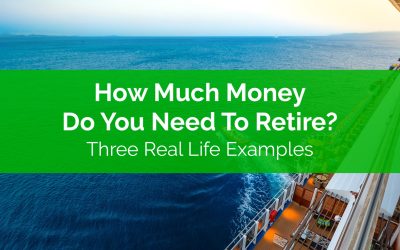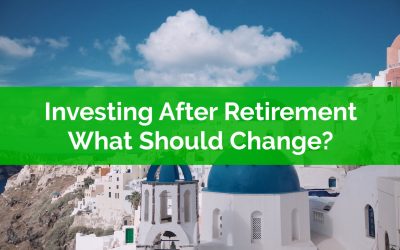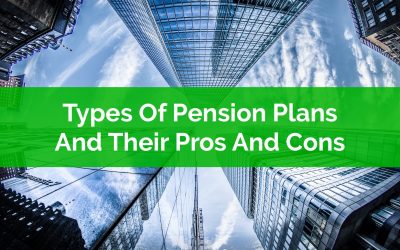Congratulations! You’re on the waitlist!
We will e-mail you before the bootcamp launches for an exclusive preview.
Check out our latest blog posts…
How Much Money Do You Need To Retire? Three Real Life Examples
How much money do you need to retire? Well that depends, the more appropriate question might be how much do you want to spend? In this post we’re going to look at three real life retirement examples, one high spending around $200,000 per year, one moderate spending around $70,000 per year, and one low spending at $30,000 per year.
Retirement planning is always driven by spending assumptions in retirement. Spending levels have an enormous impact on how we can plan draw down, how we can manage taxes, and most importantly… how successful the plan is during periods of low investment returns. This is why it’s so important to accurately estimate spending when doing a retirement plan.
Spending doesn’t just include your regular day to day spending, it should also include things like one-time expenses for children’s weddings or once-in-a-lifetime trips. And it should always include an estimate for infrequent expenses like home repairs, vehicle repairs, and vehicle upgrades.
Determining how much money you want to spend in retirement will go a long way to helping to determine how much money you need to retire.
That being said, spending is important, but it isn’t everything…
Other income sources like government pensions, private pensions, and government benefits are also an important factor to consider. Income from government pensions can easily represent 25% to 50% of a retirees spending goal in retirement. Government benefits like GIS and GAINS in Ontario can easily add up to $10,000+ per year for low-income retirees.
The other factor to consider is how much income tax you’ll be paying in retirement. Not all income sources are created equal. Income from a defined benefit pension can be split between partners before age 65, a huge tax planning advantage. Income from CPP, OAS, RRSPs etc are all fully taxable whereas income from TFSAs or non-registered accounts are not. In some provinces non-registered eligible dividends from a Canadian company can actually have a negative tax rate, a big advantage when determining how to best draw down assets in retirement.
To determine how much money you need in retirement often requires a very custom financial plan. This retirement plan looks specifically at your income sources, your financial assets, and your spending goals to determine how much you actually need to retire (and often it’s less than you think!).
In this post we’re going to look at three real life retirement planning examples. These examples are from case studies that we’ve done in the past with the Financial Post or other personal finance websites. We’ve chosen three in particular. One high income retirement planning example. One moderate income retirement planning example. And one low income retirement planning example.
Investing After Retirement… What Should Change?
Should anything change when investing after retirement? Are there specific investment options for after retirement? Should you change your asset allocation after you’ve retired?
For the average retiree their investment portfolio will make up a significant portion of their retirement income. Most of us will receive some government pension from CPP and OAS. Some of us may also receive retirement income from a defined benefit pension as well. But even in those situations we’re probably still creating some retirement income from an investment portfolio each year and this income is critical to help us reach our spending goals.
Given investment income is such an important part of most retirement plans, should anything change when investing after retirement?
For some people the answer might be yes. But for most of us the answer is probably no.
There are a few important factors to consider when investing after retirement and the three big ones are asset allocation, investment fees, and complexity.
These three factors are important to consider when investing after retirement. Depending on how your investment portfolio currently stands against these three factors it may warrant making some changes before entering retirement.
Types Of Pension Plans And Their Pros And Cons
There are three main pension arrangements in Canada and most people, if they have a pension plan, have one of these three main types. There are defined benefit pensions, defined contribution pensions, and group-RRSPs. Each of these have their pros and cons. (There are also some unique pension plans but these are typically intended for high income executives or business owners.)
Having an employer pension plan can be a huge benefit for retirement. An employer pension makes saving for retirement easier by taking deductions directly off your income, plus it also typically comes with employer matching. This employer matching can be worth anywhere from a few percent of your salary all the way up to 18% of your salary (depending on the plan and the retirement benefits provided).
The automatic nature of pension contributions make them a great way to save for retirement. This “forced savings” is a huge benefit in itself, regardless of the employer matching.
Depending on the type of pension you have, this money gets paid out in different ways at retirement. Some plans cannot start before a certain age while others can be accessed earlier. Depending on your retirement goals this flexibility (or lack of flexibility) is an important consideration in your financial plan.
Some pensions, specifically defined benefit pensions, may also come with health benefits, travel benefits, or life insurance benefits after retirement. This can be another important benefit of a defined benefit pension plan, one that shouldn’t be ignored (especially when deciding between a defined benefit pension and a commuted value option).
It pretty much always makes sense to participate in an employer pension plan, but the different plans do have their pros and cons. Let’s explore the three main types of plans in Canada and their pros and cons.



